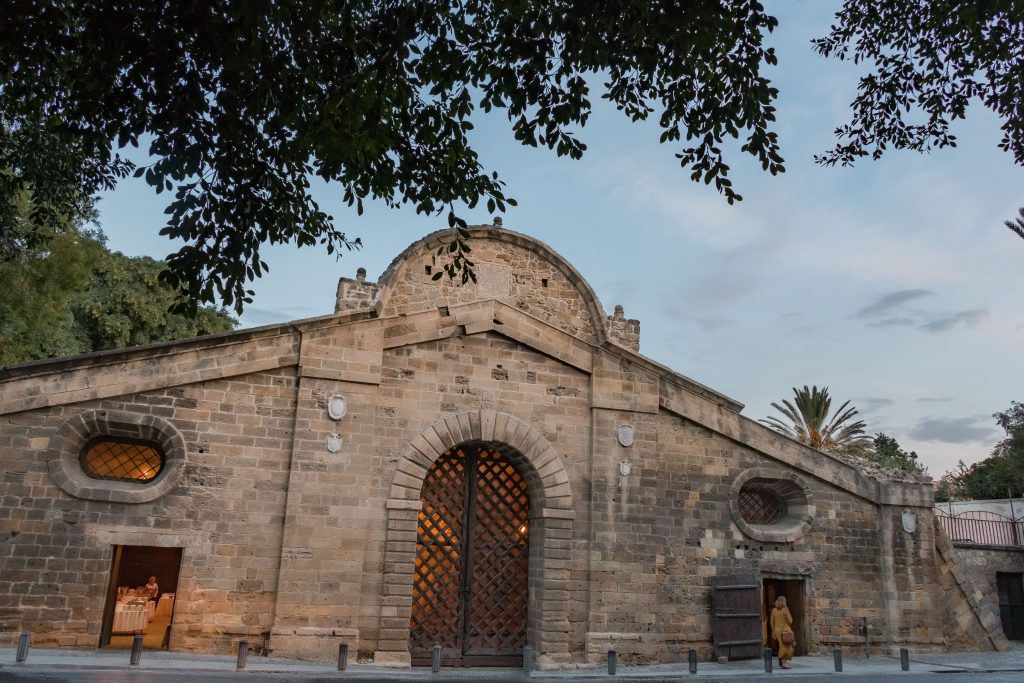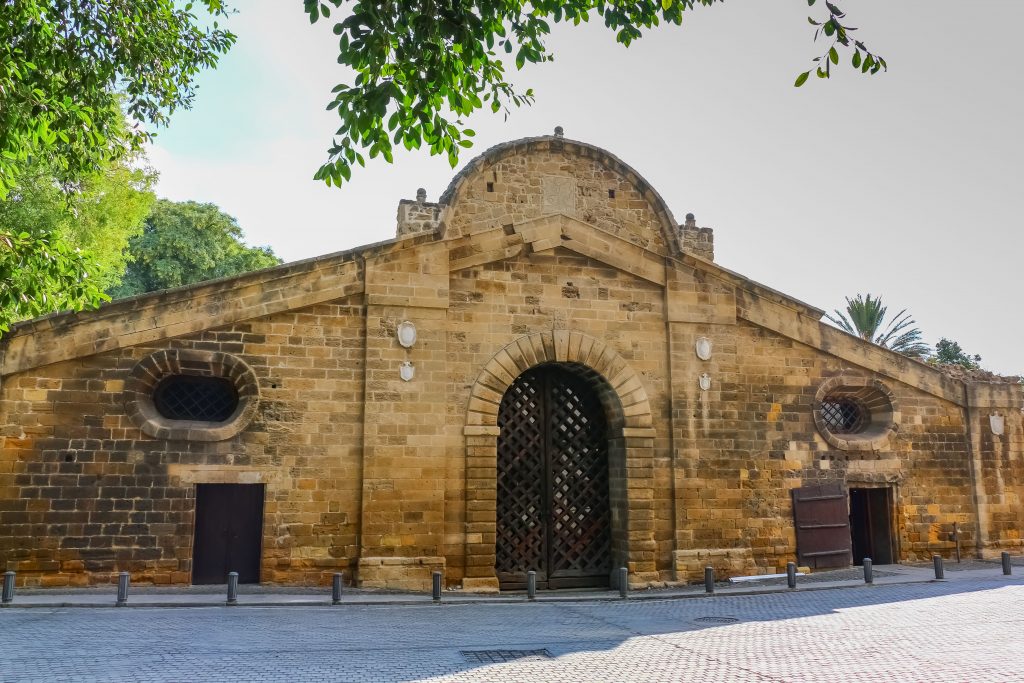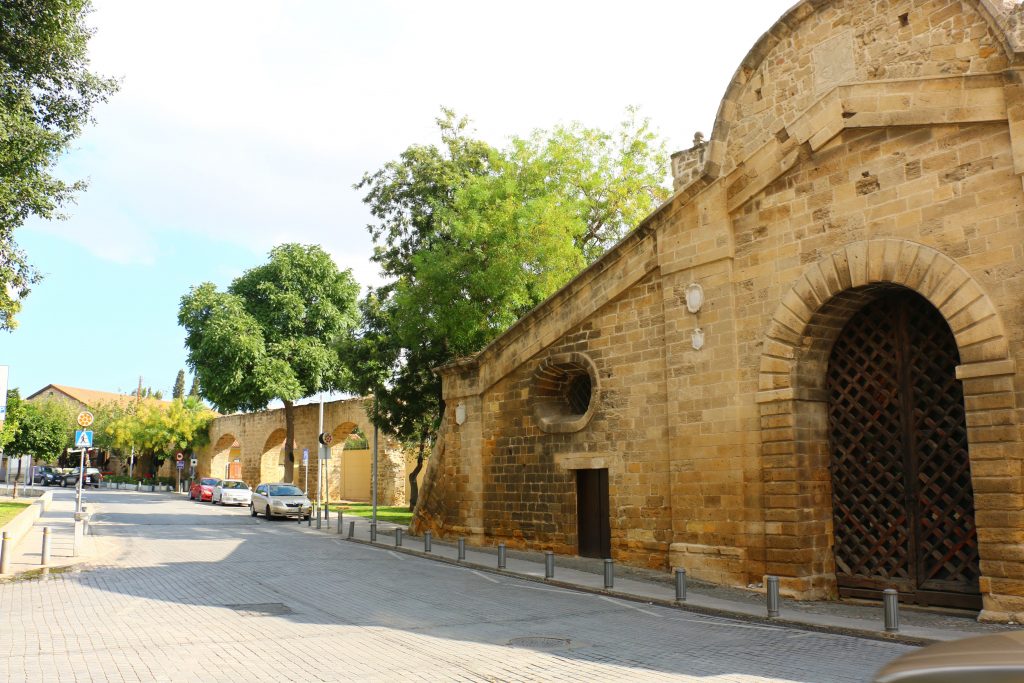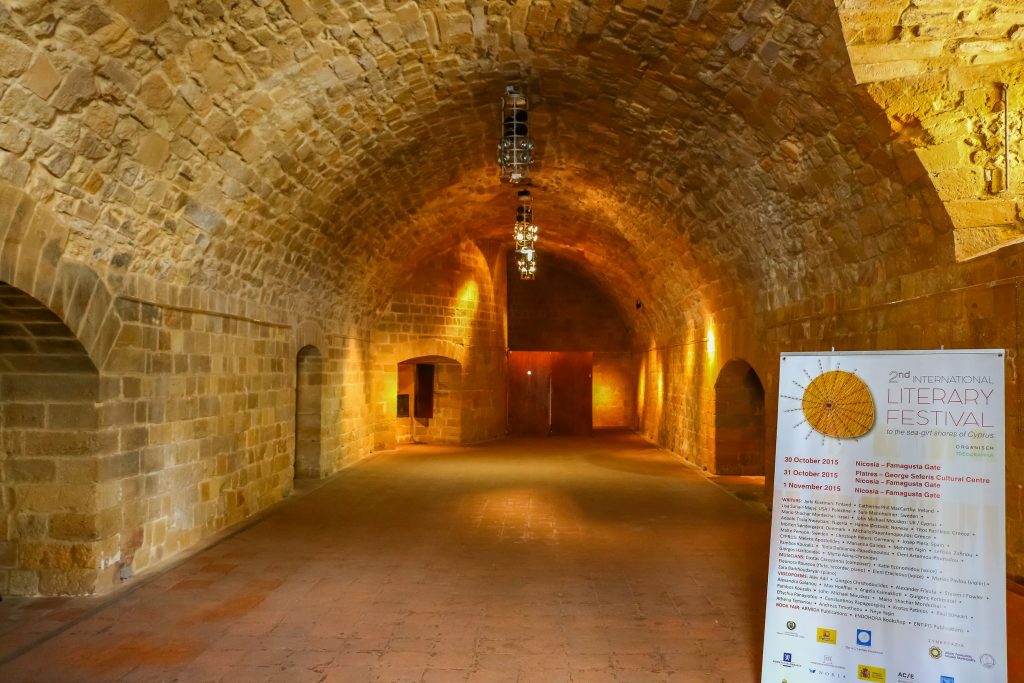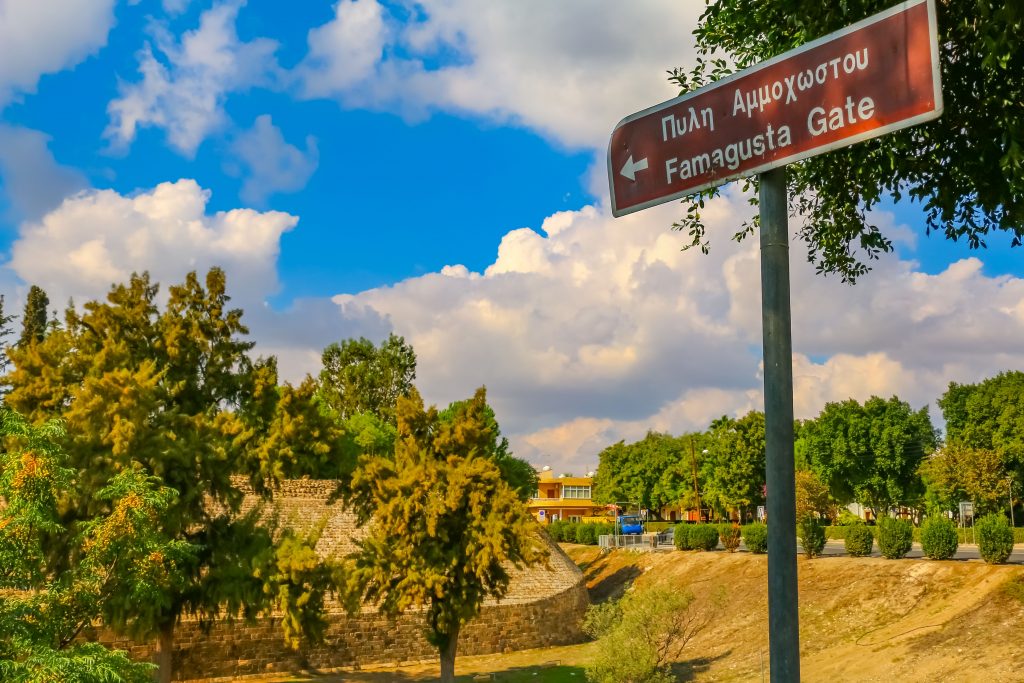Famagusta Gate
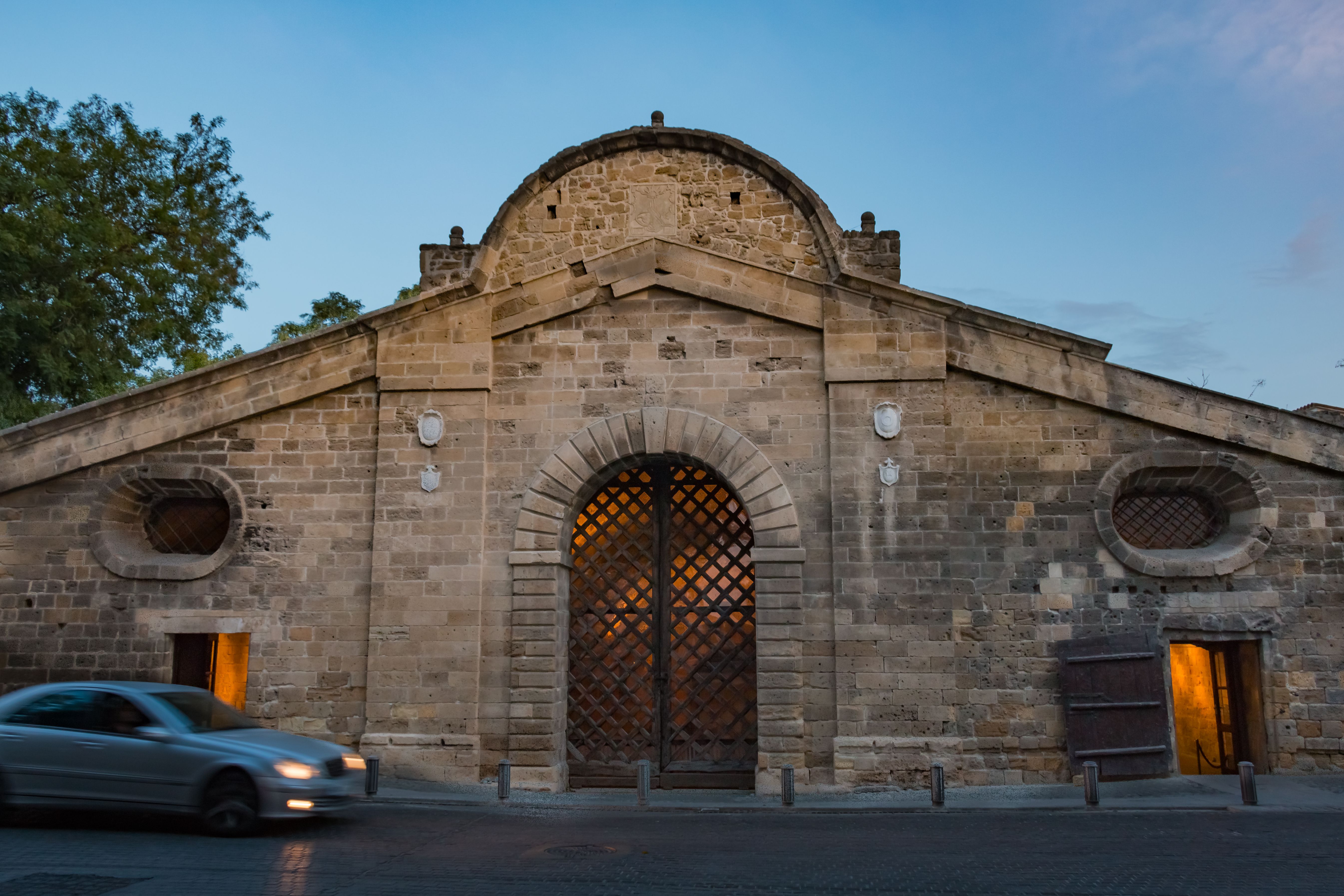
The Famagusta Gate was the most important of the 3 entrances built by the Venetians in Nicosia for access to the city and even today it is a cultural hub for the capital of Cyprus.
The Statue of Freedom of Nicosia and the Nicosian Aquarium are within walking distance of the gate, and within a short walking distance are the city’s many cultural attractions, such as the Cyprus Folk Art Museum, the Archbishop’s Palace, the Nicosian Byzantine Museum, the Nicosian Museum of Struggle and the Cathedral of Agios Ioannis, the Pancyprian Gymnasium and the Severios Library.
Being the largest and most imposing of the other two gates, namely the Pafos Gate and the Kyrenia Gate, the Famagusta Gate was a crossing and control point that closed with the sunset and opened with the sunrise. Today, it is a stone-built building with a majestic facade, an impressive two-sided entrance and a long arched passage leading to a room with a tall dome 10,97 meters in diameter, as well as rectangular rooms for the guards on both sides. Exiting from the gate and, as a result, from Nicosia, the road led to the most important harbor of the island, Famagusta, from where the current name for the gate prevailed.
It was originally known as “Porta Juliana”, in honor of the creator Giulio Savorgnano, the Venetian engineer who designed and built the walls in the 16th century (1567-1570). Later on, during the Ottoman rule, the Ottomans who used the gate could cross it on horseback, while Christians, Cypriots and foreigners, crossed it only on foot.
The Famagusta Gate today is the Cultural Center of the Nicosian Municipality, and its restoration work has been honored with the Europa Nostra International Prize by the International Federation of Associations for the Protection of the European Cultural Heritage. The official inauguration took place in 1981 and since then, the two large halls and the passage have regularly housed exhibitions, musical evenings and various cultural events in the city. The capacity of each room is about 200 people, while the passage capacity is 350 people. The northern hall is mostly used for lectures, conferences, screenings and exhibitions, while the southern hall is used as an art gallery. The passage is mainly used for concerts, theatrical performances and folk art exhibitions.
Famagusta Gate
Opening Hours: Monday-Friday 10: 00-13: 00, 16: 00-19: 00, May-September 10: 00-13: 00, 17:
00-20: 00
Phone: 00357 22797660, 00357 22797650, 00357 22797653, 00357 99206895
Fax: 00357 22430703
Free entrance
email: [email protected]

